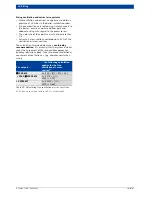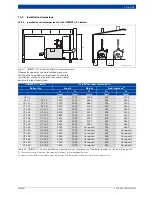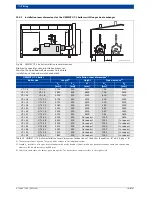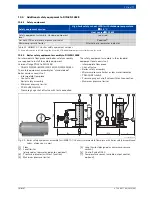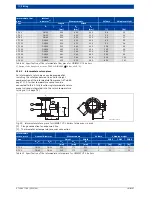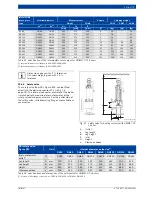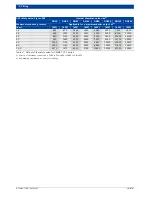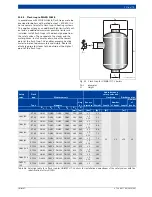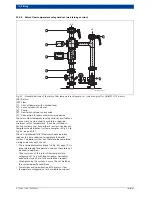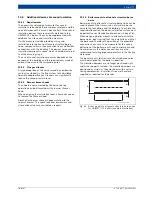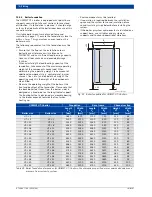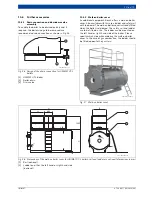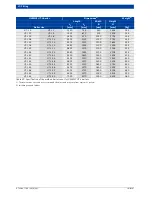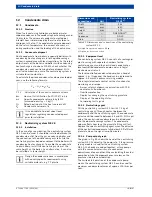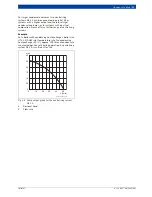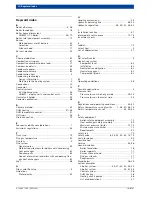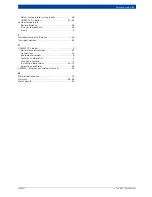
82
|
Condensate drain
UNIMAT
6 720 807 794 (2013/04)
12
Condensate drain
12.1
Condensate
12.1.1
Creation
When fuels containing hydrogen are burned, water
vapour condenses in the condensing heat exchanger and
flue system. The volume of condensate created per
kilowatt hour is determined by the ratio of carbon to
hydrogen in the fuel. The condensate volume depends
on the return temperature, the amount of excess air
during combustion and the loading of the heat source.
12.1.2
Condensate disposal
Route condensate from boilers, especially boilers with
condensing heat exchangers, into the public sewage
system in accordance with local regulations. As the rated
output levels of the boilers and boilers with condensing
heat exchangers are above 200 kW, check whether the
condensate needs neutralising before disposal. With
dual fuel combustion, ensure the neutralising system is
suitable for oil combustion.
To calculate the precise condensate volume created per
year, use the following formula:
F. 12
Calculation of the annual condensate volume
b
VH
Hours of full utilisation (to VDI 2067) in h/a
m
K
Specific condensate volume in kg/kWh
(assumed density
ρ
= 1 kg/l)
Q
F
Rated heat input of the heat source in kW
V
K
Condensate volume in l/a
12.2
Neutralising system NE 2.0
12.2.1
Installation
In the case of gas combustion, the neutralising system
NE 2.0 can be used. It should be installed between the
condensate outlet from the gas condensing boiler and
the connection to the public sewage system. Site the
neutralising system behind or adjacent to the boiler with
condensing heat exchanger. To enable the condensate
to drain freely, install the neutralising system at the
same height as the boiler. As an alternative, it can also
be installed at a lower height.
12.2.2
Equipment level
The neutralising system NE 2.0 consists of a rectangular
plastic casing with separate chambers for the
neutralising agent and the neutralised condensate, a
level-controlled condensate pump and an integral
electronic control unit.
The level-controlled condensate pump has a head of
approx. 2 m. If required, the head can be increased to
approx. 4.5 m with a pressure raising module.
The integral electronic control unit has functions for
monitoring and service:
• Burner safety shutdown in conjunction with CFB
control units from Bosch
• Overflow protection
• Display for changing the neutralising granulate
• Display of the operating status
• Forwarding fault signals
12.2.3
Neutralising agent
Fill the neutralising system NE 2.0 with 17.5 kg of
neutralising agent. Through contact between the
condensate and the neutralising agent, the condensate
pH value will be raised to between 6.5 and 10. At this pH
value, the neutralised condensate can be introduced
into the domestic sewage system. The condensate
volume affects how long the granulate filling will last.
Replace the spent neutralising agent when the pH value
of the neutralised condensate falls below 6.5. Refill with
granulate when the signal lamp illuminates.
12.2.4
Pump output graph
The graph in Fig. 59 shows the head of the neutralising
system NE 2.0 subject to the pump rate. If the pressure
raising module is used for the neutralising system
NE 2.0, the heads are added together, as two pumps
with the same characteristics are connected
downstream of one another. When calculating the actual
pump head, take the pipework pressure loss on the
pressure side into consideration.
The limited start duration of the condensate pump
means the neutralising system NE 2.0 can be used for
maximum condensate volumes of approx. 200 litres per
hour.
It is advisable to find out about local
regulations regarding condensate disposal
prior to installation.
Design the condensate hose in accordance
with country-specific requirements using
suitable materials, e.g. PP plastic.
V
K
Q
F
m
K
b
VH
×
×
=
Dimensions and
connections
Unit
Neutralising system
NE 2.0
1)
1) Weight in operation approx. 60 kg
Width
mm
545
Depth
mm
840
Height
mm
275
Inlet
–
DN40/DN20
2)
2) Option for hose connection
Sequence
–
DN20
Drain
–
DN20
Table 41 Dimensions and connections of the neutralising
system NE 2.0

